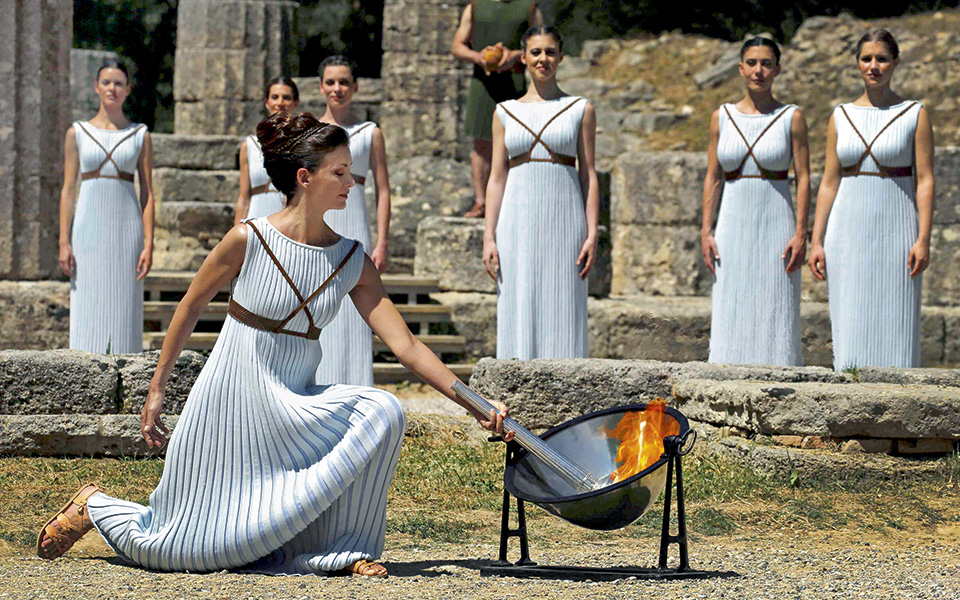The flame-lighting ceremony in ancient Olympia lasts less than an hour, but still, it is an opportunity for all the modern world to reconnect with the Olympic Games of antiquity. The link with Greece is honored to this day. As the competitors will enter the stadium for the Olympic opening ceremony in Rio de Janeiro, the Greek team will lead the way in symbolic acknowledgement of the nation’s unique place in the history of the Games, both ancient and modern.
Yet, in 1896, when the Games were revived in Athens, there was no Olympic flame; only a procession of lanterns through the city.
Not until the Amsterdam Games in 1928 did a beacon burn above the stadium, and even then it was lit by a switch. Finally in 1936, Berlin became the first host city to welcome an Olympic flame carried by a relay of runners from Olympia.
The idea had taken root in 1934. Writer Alexandros Philadelpheus had suggested lighting a flame from the rays of the sun. Greek official Ioannis Ketseas and Carl Diem, a leading figure in the Berlin organizing committee, then spoke at length about what they called the ‘Apollonian light.’ Their conversation is commemorated by a plaque which can be seen to this day in the small village of Tegea in the Peloponnese. “Greece is summoned after 2,000 years to give the light of its superior civilization to the whole world… Greeks help us convey the Olympic light,” announced an official bulletin.
“What is it that makes the lighting ceremony so very special? An important element is the location, among the pillars, in the ruins of the temple of Hera, beneath Kronos Hill. To walk here is to be transported back to the ancient Games.”
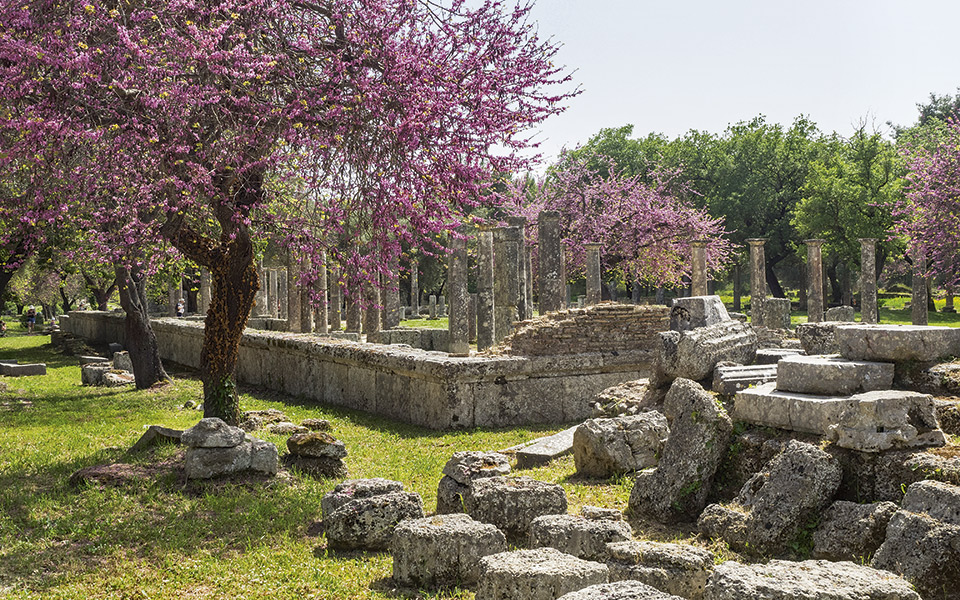
© Enri Canaj
By July 1936, all the arrangements had been made. Workmen busied themselves to make sure Olympia had “a dignified appearance in the eyes of foreign visitors.’’ Huge crowds made their way to see a flame kindled by Koula Pratsika, a dance teacher from Athens. She was surrounded by many of her pupils. The first bearer, one Kostas Kondylis, was later portrayed on the label of a box of matches. Such was the excitement that “Only the sick stayed at home,” as was the verdict of Greek newspapers, while German radio broadcast reports as the flame traveled through Europe.
A little over a fortnight later, the arrival of the final torch bearer, Fritz Schilgen, in Berlin’s Olympic Stadium was the dramatic highlight of the opening ceremony. As a matter of fact, that special moment has been the “showstopper” of all ceremonies ever since, although the means of transporting the flame have long since outstripped the simple runner. It has flown across continents, explored the sea bed at the Great Barrier Reef and been passed by cyclists, rowers, swimmers, the Pony Express, on water skis and even abseilers. It has also been carried to Mount Everest. On one memorable occasion in 1976, it was transmitted from Athens to Canada by electronic pulse.
Yet for all the innovation, many are still drawn to ancient Olympia, which, for one brief moment every four years, becomes the center of the Olympic universe.
What is it that makes the lighting ceremony so very special? An important element is the location, among the pillars, in the ruins of the temple of Hera, beneath Kronos Hill. To walk here is to be transported back to the ancient Games. No wonder that Olympia Mayor Efthymios Kotzas speaks of “the unique message of this landscape.’’ Everything about the ceremony is designed to invoke the spirit of the ancient site, from the poem Light of Olympia by the late Takis Dokis to an incantation asking for “sacred silence” by the high priestess.
“Apollo, god of the sun and the idea of light, send your rays and light the sacred torch for the hospitable city of Rio de Janeiro,’’ the chant went at the ceremony in April this year.
TOURING OLYMPIA
On entering the site of ancient Olympia, one is immediately impressed by its natural and architectural landscape. On the left lie Roman baths, while on the right the Hellenistic-era Gymnasium and Palaestra. More Roman and earlier Greek baths lie just beyond, as well as the workshop of the great sculptor Pheidias. Continuing eastward, one finds the double-apsed Bouleuterion, where athletes and judges were sworn to obey the rules.
The heart of Olympia’s sanctuary was the Altis: the sacred area containing the now-lost Altar of Zeus; the Doric temples of Zeus, Hera and Cybele/Rhea; and the long-venerated Precinct of Pelops. Overlooking the Altis was a row of small treasuries for dedications, erected by various city-states. Nearby, the elegantly restored Philippeion, a circular heroon, was erected by Philip II to emphasize his Macedonian supremacy over Greece. Beside the Echo Stoa, which offered visitors protection from sun or rain, an arched tunnel led into the Stadium.
Olympia’s museums should not be missed! The Museum of the History of the Ancient Olympic Games contains statues, painted vases, inscriptions and other revealing artifacts. The centerpiece of the Archaeological Museum are the Severe Style sculptures from the Zeus temple’s pediments, depicting mythical Pelops’ chariot race against Oenomaus and wild centaurs struggling with Lapiths (the Centauromachy). In another gallery stands the magnificent Hermes with Baby Dionysus, attributed to the 4th-century BC master sculptor Praxiteles.
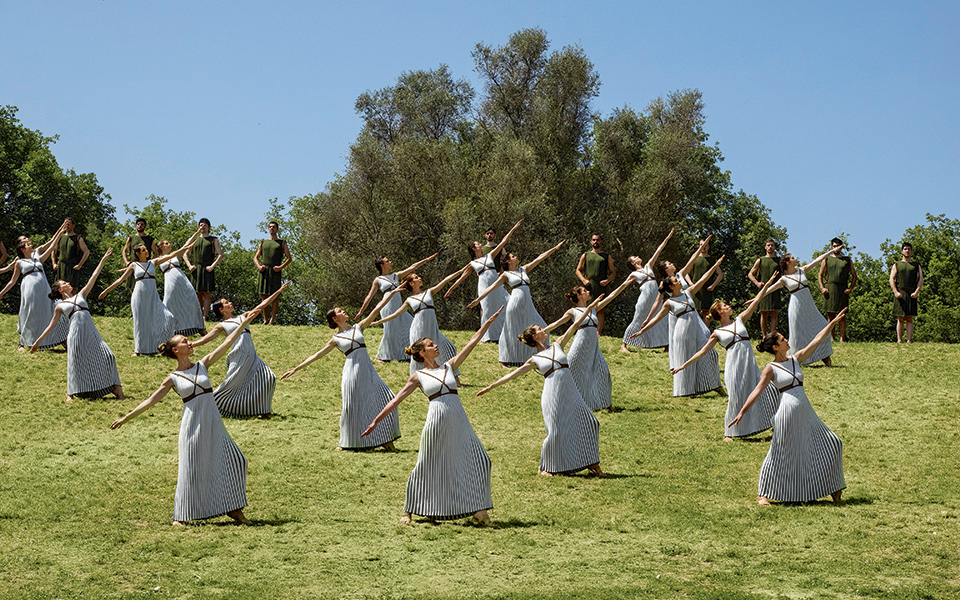
© Enri Canaj
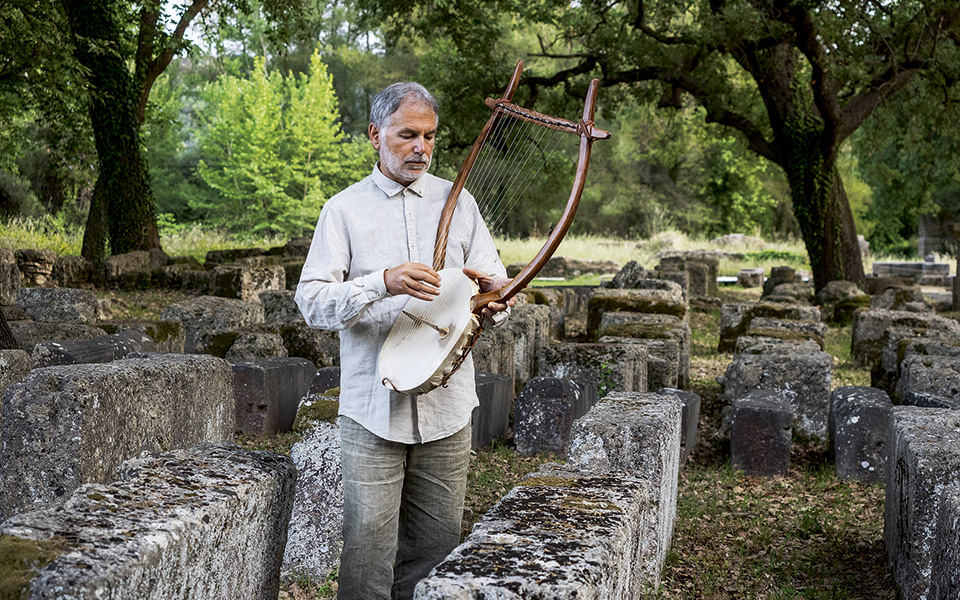
© Enri Canaj
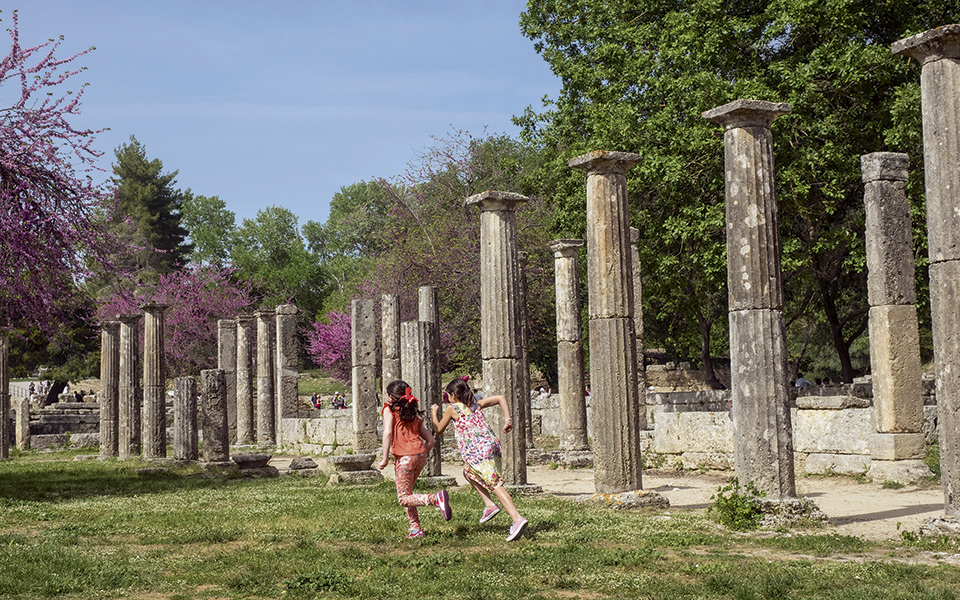
© Enri Canaj
The actual moment of lighting is beautifully simple. A reflective bowl is used to catch the rays of the sun and spark a flame. The participants in the ritual are drawn from classical dance theater in Greece, but this is no ordinary performance. “I cannot say this is like any other choreography,” admits ceremony director Artemis Ignatiou, who first participated as a dancer back in 1988. “When choreographing for the Olympic flame, I serve an idea that comes from Greece and now belongs to the whole world. I treat it with great respect, because we have to deliver a message of global equality and peace.”
The costumes worn by the dancers are also inspired by ancient designs. For 2016, Eleni Kyriacou created long flowing dresses in turquoise and olive green for the maidens – a fresh approach to the traditional chiton. The young men or heralds were dressed in olive green. All danced to delicate melodies on flute and lyre composed by Yannis Psimadas.
As if to beckon it towards Rio and the Copacabana, the 2016 lighting ceremony was attended by cloudless blue skies. Even so, organizers still took care to keep the flame from each rehearsal, just in case clouds should arrive unexpectedly on the big day. The first torchbearer is always Greek and most often a prominent sportsman. This year the choice fell on gymnast Eleftherios Petrounias, a man with high hopes of adding an Olympic gold medal to his 2015 World Championship gold. As tradition dictates, he carried the torch to a marble stele set amongst the olive groves to pay homage to Frenchman Baron Pierre de Coubertin, founder of the Modern Olympics. Then came the first exchange of the flame to Giovane Gavio, a legendary figure in Brazilian volleyball – 12 years ago he won his second gold at the Athens 2004 Games. His return to Greece was clearly one of great emotion, as he knelt to receive the flame.
“When choreographing for the Olympic flame, I serve an idea that comes from Greece and now belongs to the whole world. I treat it with great respect, because we have to deliver a message of global equality and peace.”
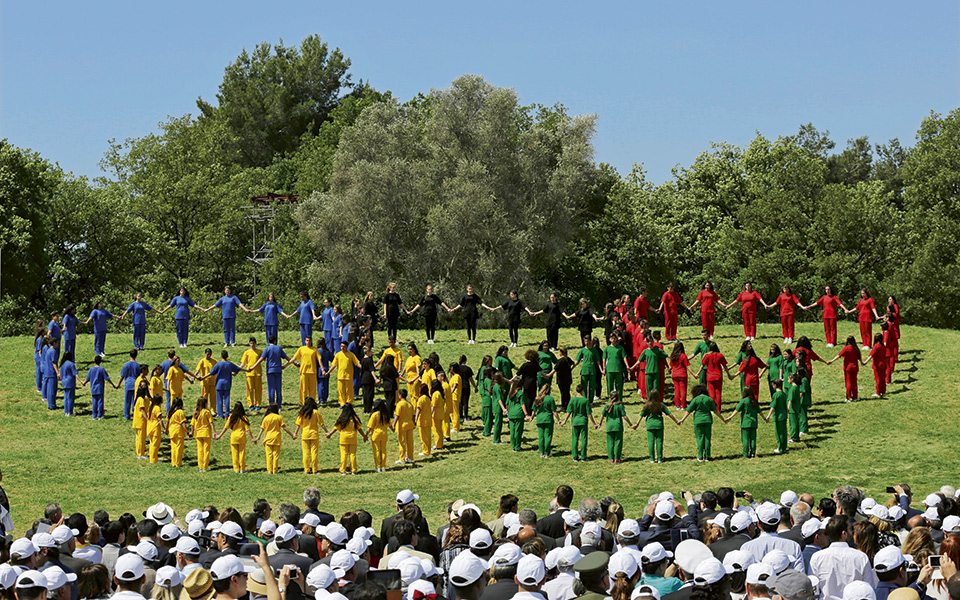
© AFP
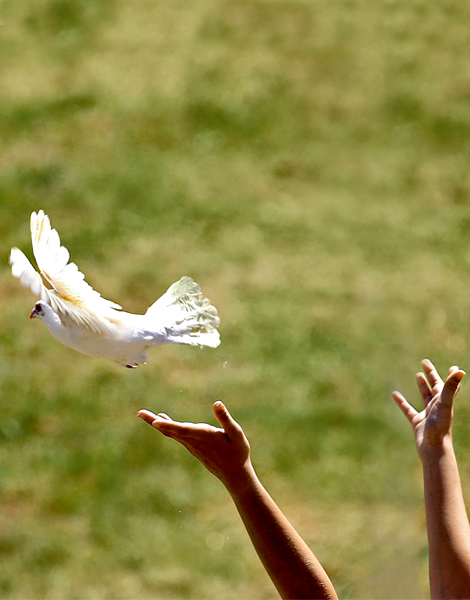
© Reuters/Yannis Behrakis
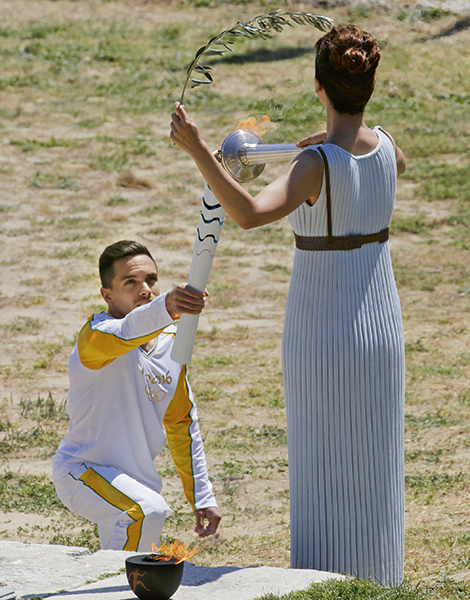
© Reuters/Yannis Behrakis
Each handover, or “kiss,” takes the flame further on its journey. Waiting at the bridge over the Kladeos River was Dr Kostas Georgiadis, dean of the International Olympic Academy. He ran with an escort of students from across the world. It was the perfect symbolic spot, for this was the outer precinct of the ancient Olympic site. Then onwards towards Athens. Only in the Greek capital did the fire finally become the responsibility of Rio. Since then it has embarked on a 95-day odyssey across the vast lands of Brazil.
Throughout its journey, the flame has been seen as a beacon of hope and peace. The idea of the ancient cessation of hostilies, Ekecheiria (or truce) during the Games, had been called for many times. But in the new millennium, both the establishment of the International Olympic Truce Center in Athens and a plea for peace at the United Nations, gave it new resonance. In 2016, some 60 soldiers symbolically laid down their guns and walked from Elis to Olympia as they would have done in ancient times.
A week later, at the suggestion of Hellenic Olympic Committee President Spyros Kapralos, Syrian amputee swimmer Ibrahim Al Hussein took the torch at the Eleonas reception center for refugees in Athens. It was a poignant moment. That message of hope has by now traveled all the way to Rio, where for the first time a team of Refugee Olympic Athletes is taking part in the Games.
INFO
ANCIENT OLYMPIA: Olympia (county of Ilia)
• Tel. (+30) 26240-22517
• Opening Hours: 08:00 – 20:00 (autumn and winter closing times vary)
• Admission: Full €12, Reduced €6 (Valid for the archaeological site of Olympia, the Archaeological Museum, the Museum of the History of the Ancient Olympic Games and the Museum of the Excavations)

